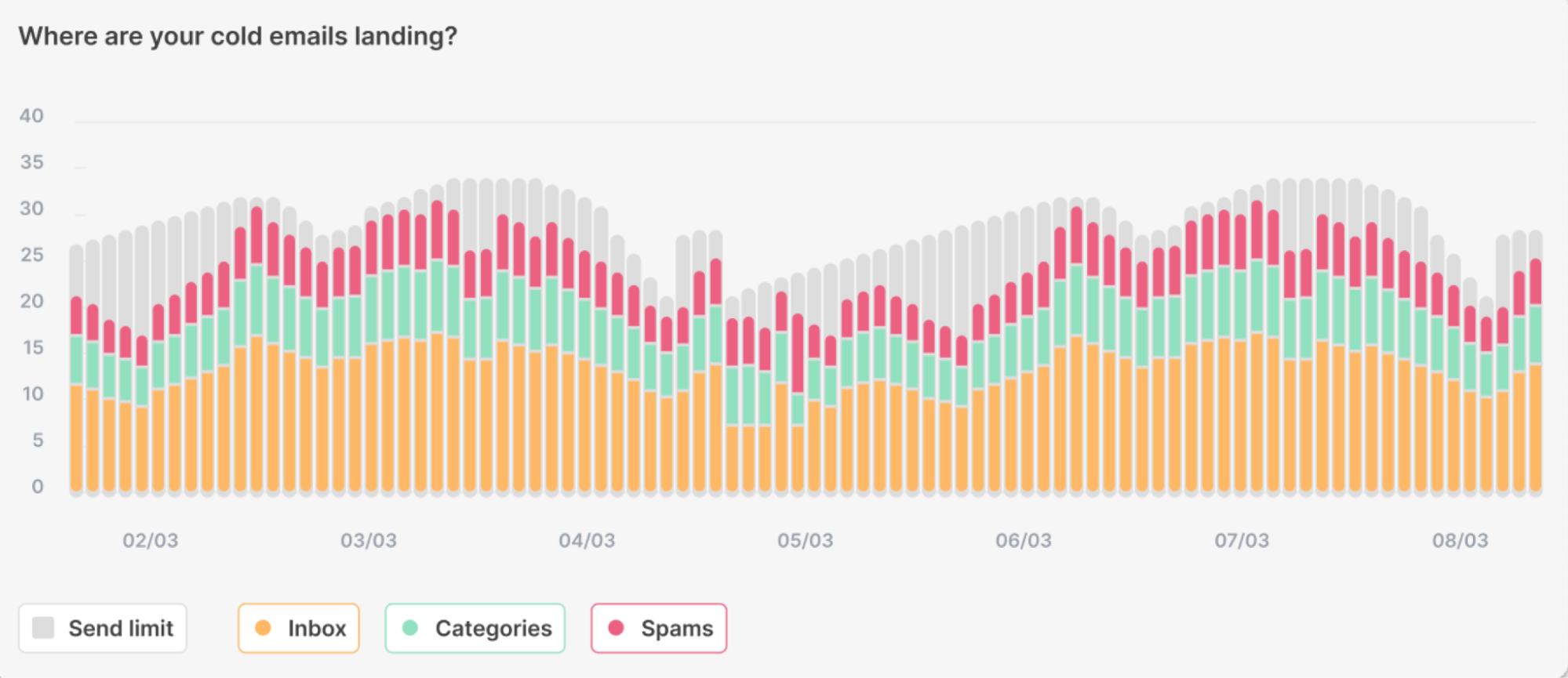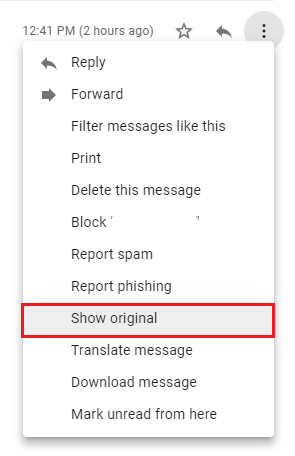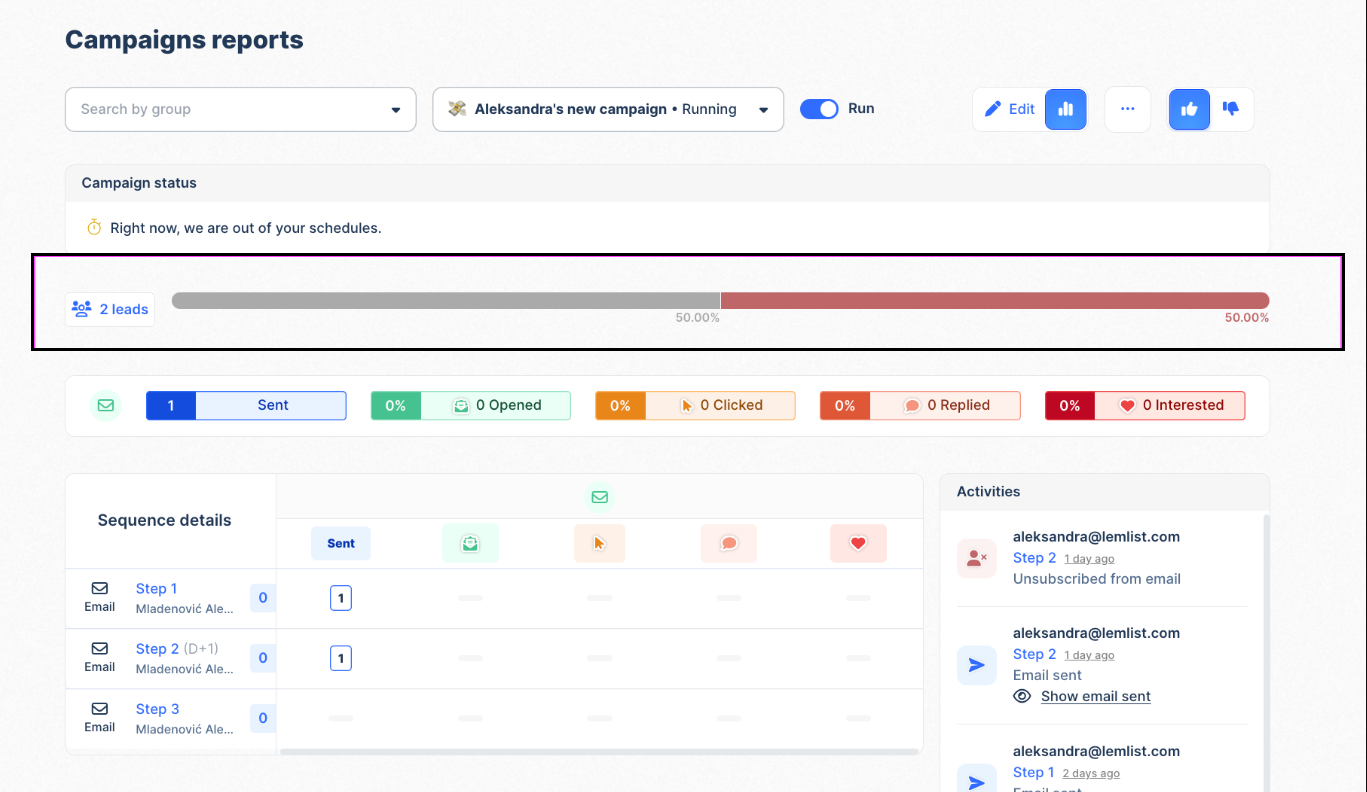In 2023, 45.6% of all emails worldwide was considered spam.
That’s almost half (!) of all emails.
No wonder spam filters kill even the most flawless emails.
The challenge, then, is how to sidestep spam filters. The answer is good email deliverability.
If you get no or very few replies, the chances are your email deliverability is bad.
Let’s end that today with our ultimate guide to better email deliverability.
In A Nutshell: Email Deliverability & Spam Filters
When you hit ‘send,’ your email zips through complex networks, facing off against AI-powered spam filters guarding your recipient’s inbox.
Email deliverability—a key metric usually expressed as a percentage—captures the success of your email’s journey to the primary inbox.
Spam filters employ various techniques to ensure emails are relevant and safe to receive.
Here’s a quick rundown:
- Content Filters: Scan your email’s text for spam words.
- Header Filters: Delve into the technical details of your email, like sender information and routing paths, to spot any signs of fraud.
- Blacklist Filters: Block emails from senders who have been flagged in global spam databases.
- Language Filters: Watch out for emails in unexpected languages, which might indicate spam.
- Rule-Based Filters: Allow users to set custom rules for what they consider spam, adding another layer of personalization to spam detection.
What Successful Email Deliverability Looks Like
The goal for effective email deliverability is clear: your email should land in the primary inbox, not the junk or spam folder.
Different email clients have varied criteria for success.
For instance, Gmail categorizes emails into tabs, such as promotions, social, and updates, in addition to the primary inbox.
Ensuring your email lands in the desired tab (the PRIMARY inbox) is crucial, especially in such a segmented environment.
Following this email deliverability checklist is one way to make sure your emails are delivered to the primary inbox.
How Do I Know Whether My Emails Are Being Delivered?
1. Do an Email Deliverability Test
Internet Service Providers (ISPs) are rigorously filtering spam, which now comprises an astonishing half of all email traffic.
So, it’s more important than ever to conduct email deliverability tests before starting any cold email campaign.
These tests are your secret weapon in keeping your legitimate emails from being mistakenly labeled as spam.
Maintaining a spam rate below 0.1% is essential to safeguard your sender‘s reputation.
Typically, the results of a deliverability test are presented as a score, providing a concrete metric to measure and guide improvement efforts.
The objective is to attain an acceptable deliverability rate, typically around 95% of successful deliveries, with a bounce rate not exceeding 3%.

It’s also a good idea to run regular cold email audits. Use this tool to help you out! ⬇️
2. Direct Inquiry
Send a quick message to your recipients asking for confirmation of receipt.
This method is simple and direct.
Remember to give a brief contextual overview of your initial email & be polite.
Here’s an example:
Subject line
Quick Check-in: AI Campaign Paid Collab Proposal
Email body
Hi there [Graphic Designer’s Name],
Just circling back to make sure my previous email hit your inbox.
To recap, I’m planning an AI content campaign for a big client of mine, would you be interested in crafting a few comic-style graphics to support it?
If you are – shoot a quick reply & I’ll send over the deets.
Thanks a bunch!
Cheers,
[Your Name]
Sending cold-emails? Try these tried and tested follow-up templates to secure more replies!
3. Watch for Bounce Notifications
Keep an eye on bounce notifications – they indicate that your emails haven’t been delivered.
In Gmail, click on the ‘Show original’ option in sent emails by clicking on the three-dot expander.

A new tab will open and display the full header – click ‘Copy to clipboard.’
Then go to this site, paste the header text & click ‘Analyze’ for feedback on delivery status.
Outlook users can rely on delivery receipts or the ‘Tracking’ feature, while Apple Mail users should activate ‘Delivery and Read Receipts.’
For detailed guidance on enabling read receipts, check out our dedicated post titled ‘How to see if someone read your email‘.
4. Try Chrome Extensions
Extensions like MailTrack and Email Tracker by Mailtag can help you gain easy oversight over when and how often your emails are opened.
5. Use Dedicated Email Software
Email automation tools let you track open rates, clicks, replies, and more.
Explore lemlist if this option interests you, here’s a snapshot of our campaign analytics dashboard:

How To Improve Email Deliverability
We have a comprehensive email deliverability checklist ready if you want a step-by-step breakdown instead.
For now, here’s a nifty overview of the email deliverability basics you need to follow:
1. Warm Up Your Email Domain
Sending emails in bulk?
Just like warming up before a physical activity, your emails need to ease into the sending process.
Begin by sending a few emails per day and gradually increase the number.
This 3-4 week warm-up period acclimatizes your emails to the digital environment, boosting your deliverability score.
2. Choose a Professional Email Service Provider (ESP)
Investing in a professional ESP can significantly enhance your email deliverability.
Think of an ESP as a skilled postman, ensuring your emails are delivered correctly and efficiently.
If you’re unsure about the difference between an ESP, an email client, and email automation software – here’s a nifty breakdown:
| Feature | Email Service Provider (ESP) | Email Client | Email Automation Software |
|---|---|---|---|
| Primary Function | Provides email hosting services, including the infrastructure for sending, receiving, and storing emails. | A software application used to access and manage emails from one or more ESPs. | Automates email outreach campaigns, often for sales and marketing purposes. |
| Examples | Gmail, Outlook.com, Yahoo Mail | Microsoft Outlook, Mozilla Thunderbird, Apple Mail | lemlist, Mailchimp, HubSpot |
| Key Services | Email hosting, spam filtering, security, webmail access | Email management, organization, reading, and composing emails | Automated follow-ups, audience segmentation, email personalization |
| User Interface | Often provides a web-based interface for email access | Desktop applications, web-based services, or mobile apps | Web-based platforms for managing and automating email campaigns |
| Integration with Other Services | Typically limited to the provider’s ecosystem (e.g., Google Workspace, Microsoft 365) | Can integrate with multiple ESPs and may include additional features like calendars and task lists | Often integrates with CRM systems, social media platforms, and other marketing tools |
| Customization and Personalization | Basic customization of email settings | Extensive customization of email management and organization features | Advanced customization for email campaigns, including content personalization |
| Use Case | Ideal for individuals and businesses for basic email communication needs | Suited for users needing to manage multiple email accounts in one place | Best for businesses focusing on marketing and sales outreach with a need for automated email sequences and tracking |
3. Personalize Your Emails
Personalized emails foster a connection with the recipient, thereby increasing engagement.
Aim for a reply rate of about 10 to 15% as a healthy benchmark.
Here’s an amazing resource to master email personalization at scale!
4. Maintain Email List Hygiene
Regularly update your email list to ensure you’re not sending emails to outdated addresses.
Remember, about 30% of the workforce changes jobs annually.
Keeping your email list fresh can drastically reduce bounce rates.
Ensure to verify all emails before using them. lemlist’s Email finder and verifier can help you with that.
5. Optimize for Mobile
With 42% of emails opened on mobile devices, mobile optimization is crucial.
Emails not optimized for mobile are often deleted or marked as spam.
6. Avoid Common Email Pitfalls
Here are some quick don’ts to keep in mind:
- Personal Emails for Professional Use: This is a big no – always use a professional email address.
- Overzealous Sending: Sending too many emails at once can harm your deliverability.
- Content Imbalance: Strike the right balance between text and visuals – keep your emails under 100 words and limit to one image.
- Neglecting A/B Testing: This is crucial for understanding what resonates with your audience.
- Link Overload: Limit to one link per email to avoid being flagged by spam filters.
- Red Flag Words: Avoid spam trigger words.
- Ignoring Unsubscribe Requests: For newsletters – always include an unsubscribe link and respect opt-out requests.
7. Technical Foundations
Using a custom domain?
Understand and implement authentication protocols like DNS, SPF, DKIM, and DMARC.
These act as security checkpoints for your emails, ensuring safe passage to the inbox.
You can either set these records up yourself or use tools such as these to help you.
8. Adhere to Regulatory Compliance
Stay compliant with regulations like GDPR to avoid hefty fines.
Use accurate enrichment tools (like lemlist’s built-in email verifier) to bolster compliance further.
9. Quality Over Quantity
Focus on sending quality emails rather than mass emailing.
Targeting the right people is key to higher engagement rates (= better email deliverability!)
So, if you’re pushing bulk campaigns, ensure your contact lists are correctly segmented.
FAQs
Is it safe to use images in my emails?
Yes, images won’t automatically doom your emails to the spam folder.
However, balance is key – we wrote an entire post about whether images send your cold emails to spam if you’re interested.
Do I need a custom tracking domain?
Not essential, but a custom tracking domain can safeguard your main domain’s reputation.
We created an entire guide on custom tracking domains; check it out!
Can using emojis in subject lines impact email deliverability?
Emojis are like spices – a little can bring life, but too much might spoil the dish.
Test their impact and use judiciously to avoid spam filters.
Here’s a data-backed guide on how to use emojis in cold emails.
What impact does the length of an email have on its deliverability rate?
Length isn’t a deal-breaker, but crisp, focused emails usually win the race.
Keep it valuable and to the point.
How can I maintain a good sender reputation when sending emails to new or unfamiliar recipients?
Start gently, increase the volume gradually, and keep your content engaging.
Check out lemwarm for automated IP warmup!
Does sending emails at specific times or on certain days affect deliverability?
Yes! Experiment with different send times to catch your audience when they’re most receptive.
Your source of actionable outreach tips and strategies that will help you get replies and grow your business.

